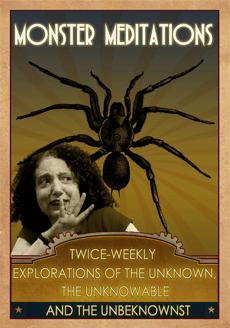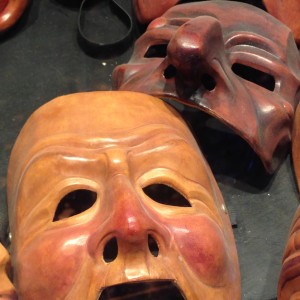As I slogged through the last couple of hours of ‘The Man in the High Castle’ (Amazon’s series inspired by Philip K. Dick’s 1962 Hugo Award Winner) my focus wandered from the action of the story to the physical appearance of the characters. How and why actors are cast in roles has a great deal to do with their appearance. This is not news to anyone, but there are subtle, and sometimes interesting, ramifications of casting.
In real life, we all encounter people who defy quick definitions. Women who are compelling and very attractive without being conventionally beautiful or even pretty, are less likely to appear in fiction than their male counterparts, i.e. the sometimes ugly, but eminently swoon worthy leading men of Hollywood’s Golden Age. In fiction, unconventional looks often signal individuals with a dynamic presence, eccentric outlook or outsider status. These characters may be good, evil, helpful, harmful or anything else, but their appearance often jives with their actions as characters. It is not simple beauty or ugliness, so the reader knows this person is outside the ‘norm.’
Although costumes, make-up and hairstyles can transform actors—making the pretty girl beautiful, the beautiful woman dour, the handsome guy a little goofy and the young man old, etc.; writers describe physical appearance of characters and readers fill in the blanks—no prosthetic noses or stylists required.
Here are some typical character entrances:
The tall man commands attention as he fills the doorway.
All eyes turn to the stunning, statuesque brunette.
The nerd slips into the party, bumps into a table and drops his glasses.
The eccentric old heiress sweeps into the room on a wave of perfume.
The famous athlete enters surrounded by his adoring posse.
After watching binge watching too many hours of the TV series, I took a walk around my neighborhood. Was the short, squat porter at the building up the street destined to be a porter? Was he too small to be an impressive doorman? Was he working toward the skill set to be a higher paid superintendent or get training in construction trades? Was the tall, slender, blonde teenaged girl a model? Or maybe the vacuous look covered a brilliant, college student mind? She had the kind of beauty that invites modeling offers, but maybe she’d defy the destiny of her biology and find another path?
As storytellers, we have opportunities to create original characters that defy stereotypes and, yes, biology as destiny.






Perhaps this is similar to pet owners who bear a freakish resemblance to their pets? i.e. being arrogant actually changes the expression of your face so much you end up looking arrogant [replace with required adjective].
To be honest, I’ve always had a bit of a problem with physical descriptions in writing. I know they’re important to the general feel of a character, but I’ve never liked the convention of immediately describing new characters as soon as they walk onto a page.
I mean, if you were drowning, say, and suddenly a lifeguard appeared and dragged you out of the surf – would you care that he was 6’2″ blonde, tanned, and had a great body? Me, I’d be so busy vomiting up salt water and going through the whole ‘I almost died, I almost died’ routine that I’m sure I wouldn’t notice. And even afterward, I’d probably be more concerned with having vomit on my chin than in checking how cute my rescuer is.
So yes, that sexy lifeguard does need to be described at some point, but for me, later and in small bites is the way to go.:)
You put this so well!!!
I’m so tired of reading fiction—in all genres—with heavy-handed descriptions of each character as they make their entrance. I’m especially annoyed by endless designer clothes descriptions. I played with that in the novel-in-progress when the protagonist must undergo a make-over for her new job. Her transformation is part of her coming-of-age, but her style mentor is an aging model who shops in high-end thrift stores in posh hoods in Manhattan. But this occurs AFTER you’ve gotten to know her.
I don’t know if you do this, but I’ve been known to leave out the physical description and then go back and fill in in before I hand the manuscript to a reader. It’s largely because I want to get the INTERNAL person down before I worry about hair color. On the other hand, when physicality is germain to the plot—like the protagonist’s gymnast build—it’s go to be up front. As for the handsome lifeguard… LOL… yes, when you’re spitting out salt water it’s almost better if he’s only OK-looking.
P.S. You may enjoy my next post (Thursday) about SIZE in the size of a joke.
Size? Now I’m intrigued. 😉
I hope the post lives up to your expectations.
I just copyedited a romance where the sexy main character eyes were described in about twenty different ways so the reader would feel his magnetism. I dunno. Less really is more.
I just laughed out loud! Really, no joking. This is pre-coffee and I’m chuckling at the computer. I’ve tossed away (metaphorically since the Kindle) books for that very reason. His smoldering, magnetic, deep pools of desire, start to become boring very soon. And, unless it’s an important aspect of his character, i.e. his eyes are super weapons warming up for a kill, that kind of description feels like vamping on the piano.
Less is more. Except when the point it so be more—an overused, if sometimes potent gambit.
-face palm- Boooooring!